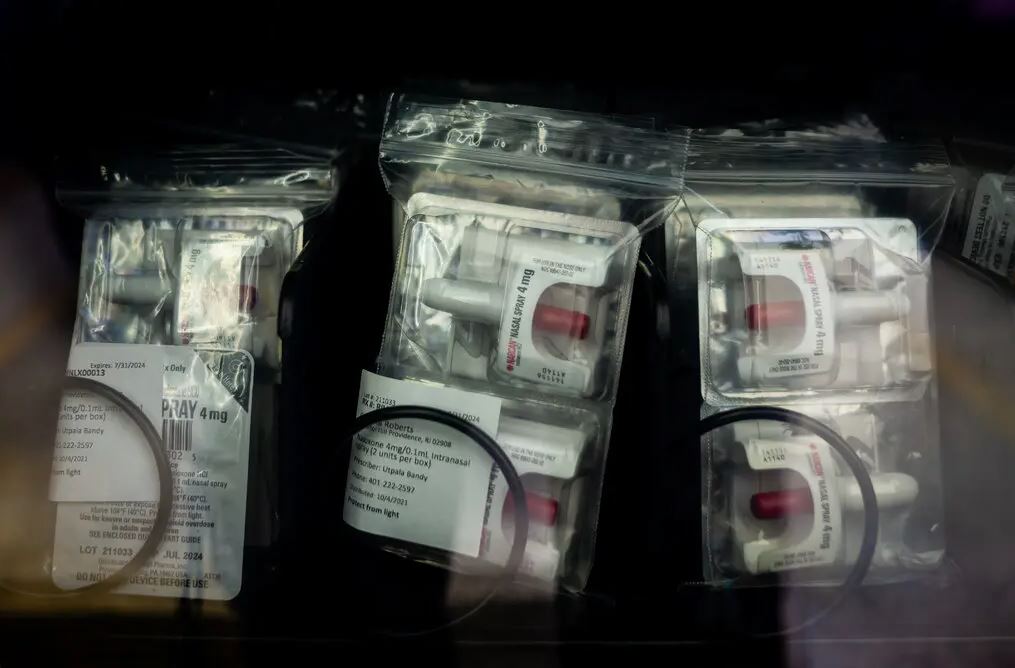The Food and Drug Administration (FDA) announced on Wednesday that Narcan, a nasal spray that reverses opioid overdoses and was previously only available by prescription, can now be sold over the counter. This move had been long-sought by public health officials and treatment experts, who are hopeful that a wider availability of the medicine will reduce the nation’s alarmingly high drug fatality rates.
By the end of the summer, it is anticipated that over-the-counter Narcan will be available for purchase in large-format retail chains, grocery shops, convenience stores, petrol stations, and online merchants. Later on in this year, the city of New York intends to deploy Narcan dispensing devices.
Naloxone is a medicine that stops the impact that opioids have on the brain, and Narcan is a nasal spray form of naloxone. As the overdose crisis has worsened in the United States in recent years, with more than 100,000 drug-related deaths in each of the last two years in the United States, outreach workers, health care providers, and emergency responders have administered millions of doses in an effort to combat the epidemic.
It is the first time that an overdose reversal spray has been judged safe for sales over-the-counter by the Food and Drug Administration (FDA). Public health professionals were quick to applaud the F.D.A.’s authorisation. Since overdoses and deaths from overdoses are happening in college dormitories, public libraries, families, night clubs, and restaurants, advocates for public health hope that naloxone nasal sprays will soon become a standard component of first-aid kits and family medicine cabinets.
Since Narcan is so simple to use, the Food and Drug Administration gave its blessing to make it available over-the-counter. Unwrapping the small device, placing the tip of the device into the person’s nostril, and depressing the plunger are all that is required of bystanders who observe a person slumped over who is unresponsive to shaking and shouting and who also has slowed breathing. These are all signs that the person may have overdosed. In the vast majority of cases, the drug is able to restore consciousness in the patient within two or three minutes.
If the individual has taken a nonopioid substance such as methamphetamines or xylazine, an animal tranquillizer that has been found entering street drug sources, then Narcan will not act on them. But addiction specialists point out that because the supply of illegal drugs has become increasingly tainted with fentanyl, an opioid, there is no downside to using Narcan, regardless of what drug the individual was believed to have taken. This is because there is no longer a safe level of fentanyl in the supply of illegal drugs.
Emergent BioSolutions, the company that develops Narcan, has refused to divulge the price that it expects to charge for an over-the-counter version, citing the fact that it will take several months to relabel and repackage the product. After the notification made by the FDA early on Wednesday morning, the firm issued a statement that did not include any discussion of price.
Robert G. Kramer, the chief executive officer of the company, made these remarks in a statement. “We are dedicated to improving public health and assisting those working hard to end the opioid crisis,” he said. “So now with leaders across government, retail, and advocacy groups, we must work together to continue increasing access and availability, as well as educate the public on the risks of opioid overdoses and the value of being prepared with Narcan to help save a life.”
The Food and Drug Administration (FDA) addressed the worry about price when it made the news that the permission was granted. The FDA encouraged additional producers of prescription naloxone to apply for over-the-counter clearance, which might make pricing more competitive.
According to Dr. Patrizia Cavazzoni, the head of the FDA’s Center for Drug Evaluation and Research, “We will collaborate with any sponsor wanting to sell a nonprescription naloxone product.” This statement was made by the FDA. In addition, she said that they were pushing manufacturers “to approach the agency as early as possible in order to commence conversations.” ”
The retail price of Narcan or any other naloxone nasal spray can have an impact on the location of the product inside a shop. One of the goals in expanding access to Narcan was to assist customers in avoiding uncomfortable interactions with pharmacists and potential complications with insurance carriers.
Nevertheless, as higher-priced commodities are more likely to be stolen from retail stores, owners of such stores may choose to keep them locked away in a glass case or behind the counter of the chemist, both of which require the consumer to approach a member of staff in order to get the merchandise. Advocates for public health have said that these placements might be a barrier for those who are able to pay for Narcan but may not feel comfortable requesting it due to embarrassment.
As an alternative to the nasal spray, naloxone may also be produced as vials of liquid that come with a syringe. They are far less expensive than the nasal spray, making them the option of choice for many community outreach organisations.
According to Dennis Cauchon, head of Harm Reduction Ohio, a nonprofit organisation that disseminates free doses of naloxone, “naloxone should have been made available over the counter in its entirety.” “At this time, only the more costly version may be purchased without a doctor’s prescription, while the more affordable ones need one. It is essential that the over-the-counter cost of the branded version of Narcan be significantly reduced in comparison to what it now is. The cost of a two-dose kit ought to be less than $30, and ideally it should be considerably cheaper than that.

